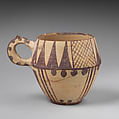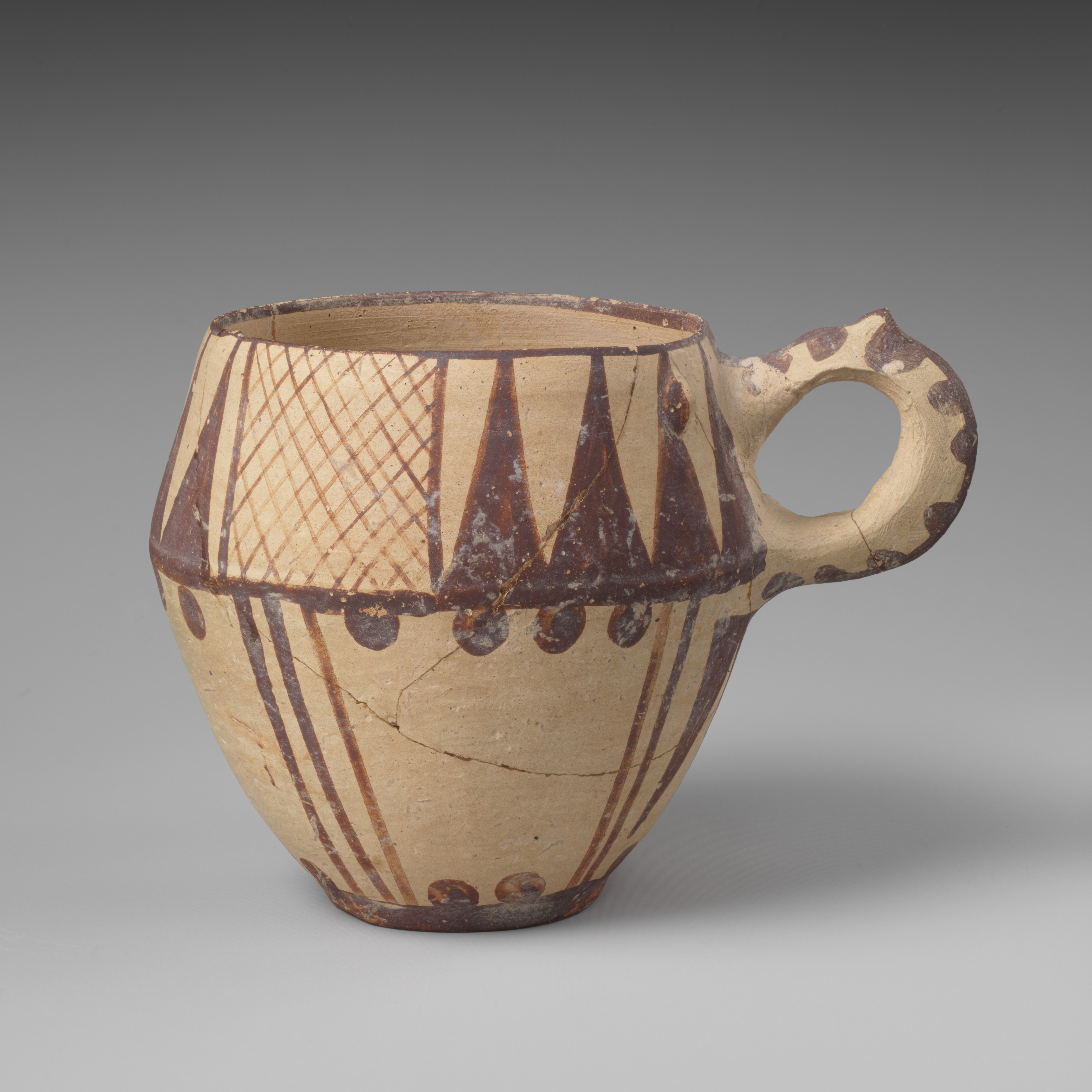One-handled cup
Not on view
This biconical cup has a small ring handle and a flat base. The top of the handle features a ridge that provides traction for the drinker’s thumb. The cup is made of a buff clay with red painted decorations, including wedges, crosshatches, vertical lines and dots. Wheel lines on the interior indicate that it was made on a potter’s wheel.
This cup was excavated at Tepe Sialk, near Kashan in central Iran. Sialk was the site of a fortified town, constructed in the early first millennium B.C. Several hundred yards from the town there was a large cemetery, called Necropolis B by the archaeologists who explored it between 1933 and 1937. The graves were pits covered with pitched roofs made of stone or clay, and in addition to the bodies of the dead they contained jewelry, weapons, leather armor, horse trappings and ceramic vessels, including many similar cups. Possibly it was used in a funerary banquet or ritual before it was placed in the grave; regardless, its burial in the cemetery shows that drinking was an important part of life and death in Iron Age Sialk.
Due to rights restrictions, this image cannot be enlarged, viewed at full screen, or downloaded.
This artwork is meant to be viewed from right to left. Scroll left to view more.



